

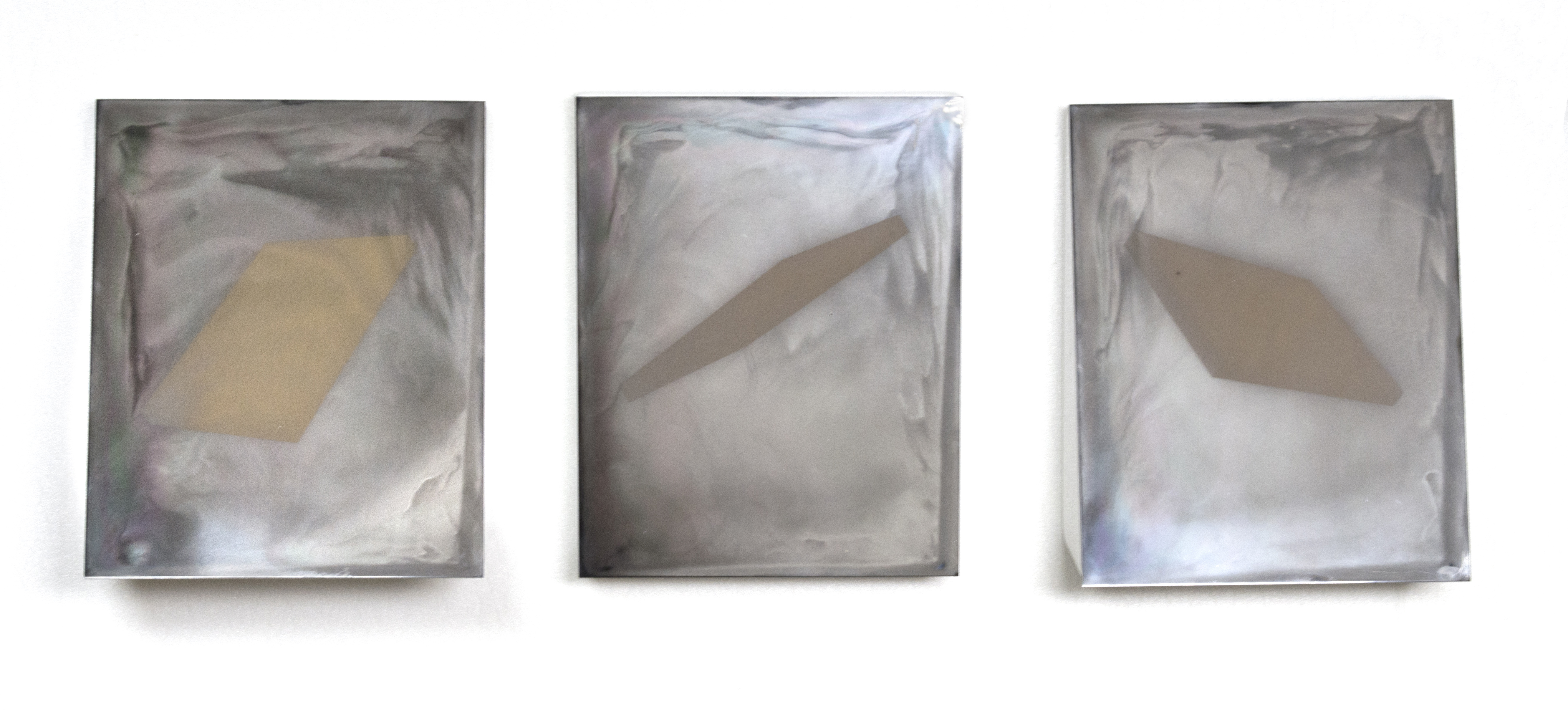
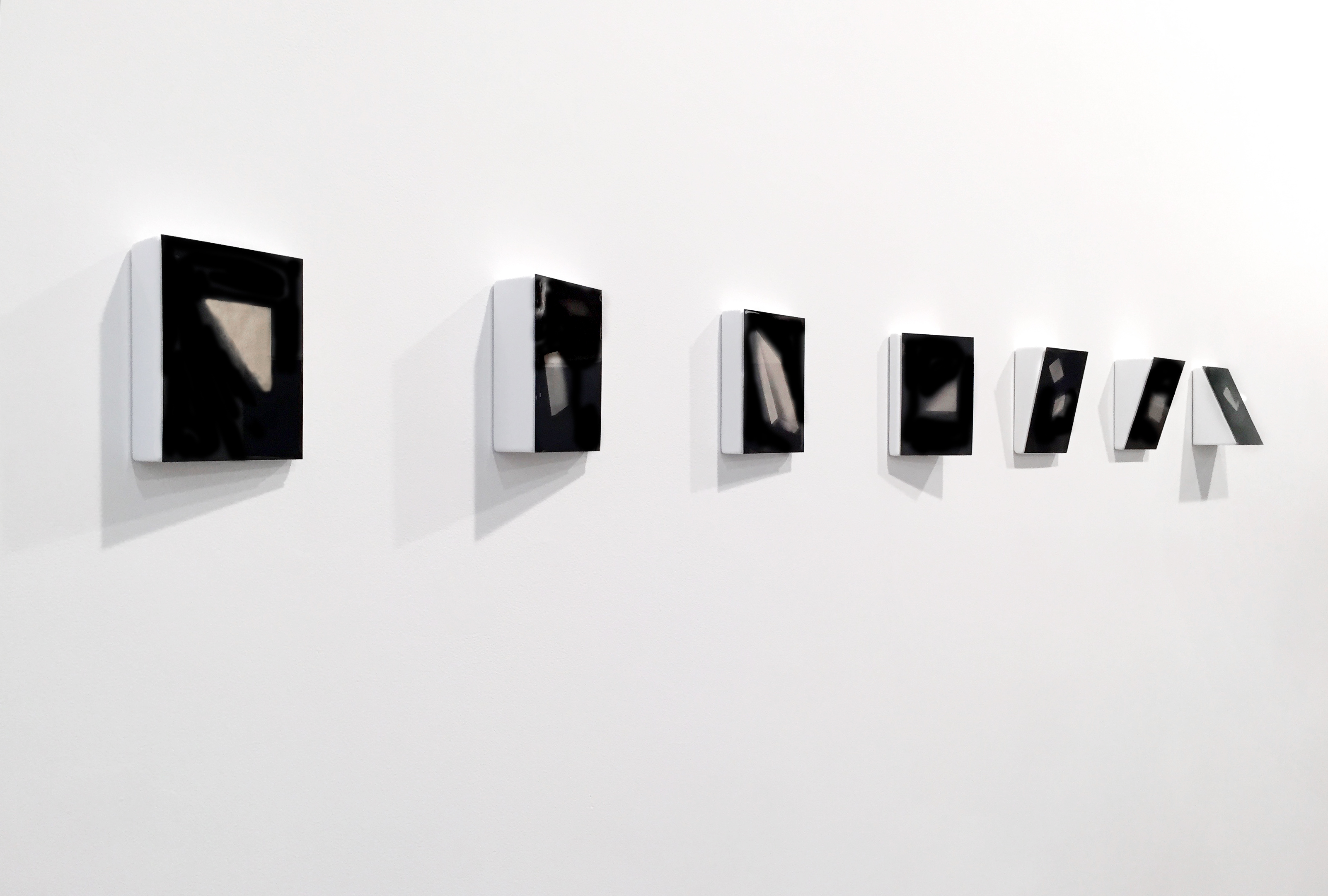
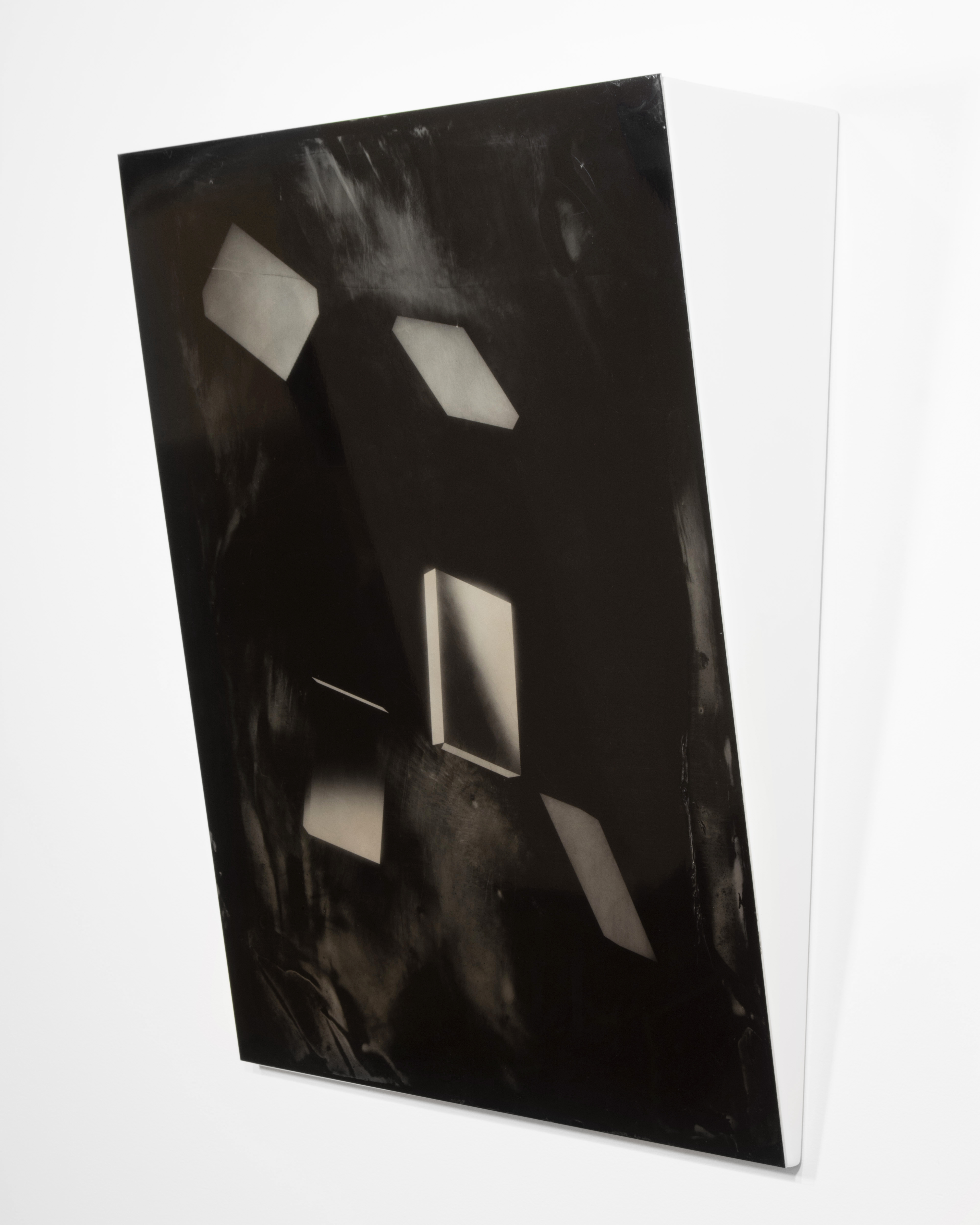


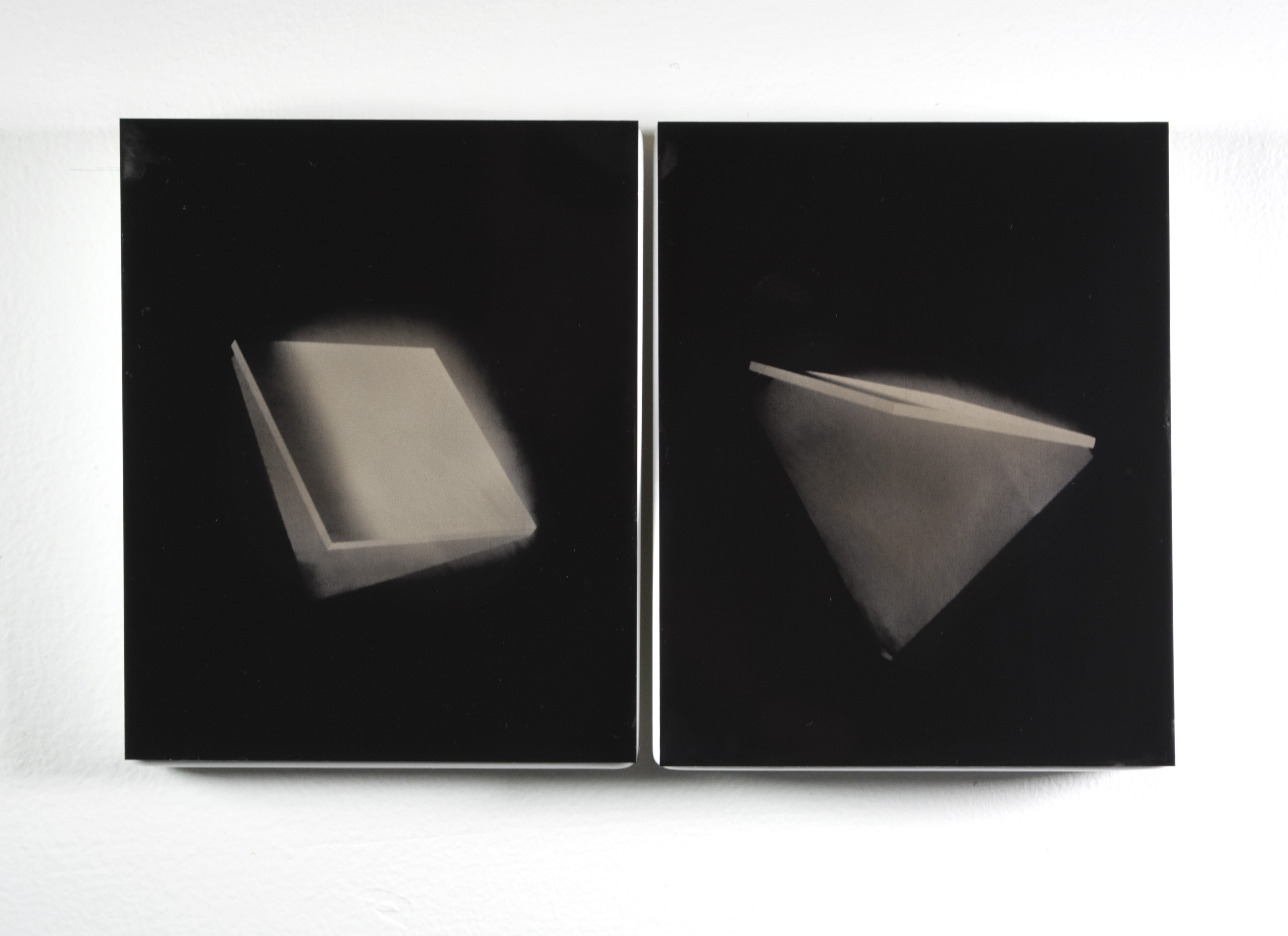

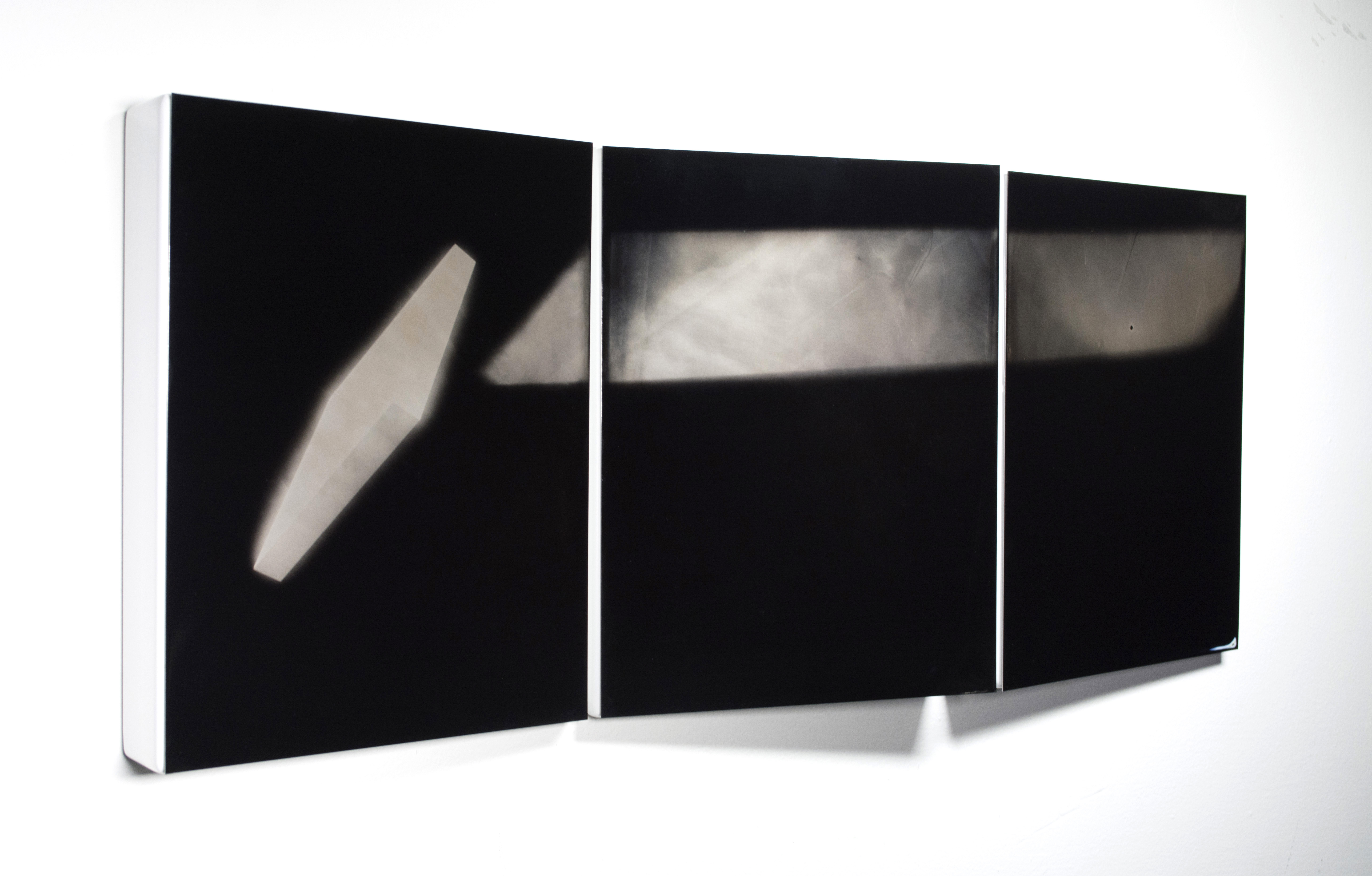


“Nelson’s ‘Tintype’ series is nothing less than an attempt to conflate time, past and future. A time machine? The works condense remote temporal moments and technologies within singular photographic plates, collating them to co-exist in two, no three, no, four dimensions.
Tintypes are created as direct positives on thin metal sheets coated with enamel and then collodion. This studio technique enjoyed its widest use in the 1860s and 70s, when it was applied to produce small-scale photographic portraits for people to carry in their pockets, but also to document the American Civil War. Between nostalgia and novelty, the resuscitation of this procedure could be said to forfeit approaches of abstraction in photography, reverting instead to aesthetics of classical representation. In her Tintype series, Combining analog with digital photography, Nelson generates abstract shapes on dark backgrounds that appear to have oozed out of a science fiction narrative. Her plates are exceptionally large and exceed the portable scale of traditional tintypes. The prints are mounted on triangular volumes that lift them out from the wall, distorting the boundaries between picture plane and physical space of the viewer.”
-Stefanie Hessler, excerpt from Brittany Nelson: Out of the Everywhere
Tintypes are created as direct positives on thin metal sheets coated with enamel and then collodion. This studio technique enjoyed its widest use in the 1860s and 70s, when it was applied to produce small-scale photographic portraits for people to carry in their pockets, but also to document the American Civil War. Between nostalgia and novelty, the resuscitation of this procedure could be said to forfeit approaches of abstraction in photography, reverting instead to aesthetics of classical representation. In her Tintype series, Combining analog with digital photography, Nelson generates abstract shapes on dark backgrounds that appear to have oozed out of a science fiction narrative. Her plates are exceptionally large and exceed the portable scale of traditional tintypes. The prints are mounted on triangular volumes that lift them out from the wall, distorting the boundaries between picture plane and physical space of the viewer.”
-Stefanie Hessler, excerpt from Brittany Nelson: Out of the Everywhere